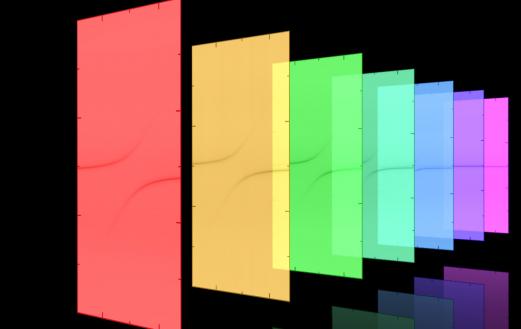10/08/2014
Yale engineers have developed a hybrid system that strongly couples magnons—the smallest unit of measurement for a magnetic spin excitation—with microwave photons. According to the researchers, the hybrid system achieved an ultrahigh coherence between the two platforms that makes the system suitable for storing and transferring information.
“Magnons, because they can interact with many different information carriers, can be an ideal bridge to platforms as diverse as microwaves, light waves, and acoustic waves,” says Hong Tang, associate professor of electrical engineering, physics & applied physics and principal investigator of the research published October 7 in Physical Review Letters. “This ability makes magnons a promising new platform for quantum communication and possibly for the development of a quantum computer.”
The Yale team’s hybrid system utilized a small sphere made of yttrium iron garnet (YIG)—a magnetic insulator that has very low magnon attenuation—placed inside a microwave cavity. The geometry of both the YIG sphere and the cavity resulted in uniform coupling between the microwave photons and magnons, and at a higher quality than previous experiments that used YIG thin films. The coupling was in fact so strong that information carried by the microwave signal can be written to or read from the magnon five billion times per second; such a processing speed allowed the information stored in a single magnon to be accessed 10,000 times before its energy was dissipated and the information lost.
In addition to the ultrahigh coherence and ultrastrong coupling between the magnons and microwave photons, the researchers also argue for further magnon use because of the platform’s high tunability and nonlinearity; these two attributes enable the platform to flexibly couple with other platforms.
“Nonlinearity is also crucial because it enables not only integration with other platforms, but also more complex manipulations to the information signal itself, such as one magnon being split into two magnons, each with half the energy of the original magnon, or perhaps two identical magnons being converted into two magnons with different frequencies,” says Xufeng Zhang, a Yale engineering doctoral student and lead author of the paper. “Our next step is to explore such nonlinear processes. With these linear and nonlinear properties, magnons become a very promising candidate as carriers for information processing and communication.”
Other authors of the article include Chang-Ling Zou and Liang Jiang.
The article is titled “Strongly Coupled Magnons and Cavity Microwave Photons.”















